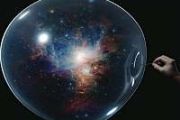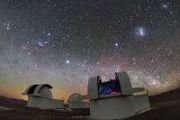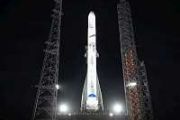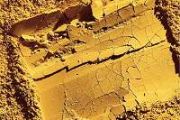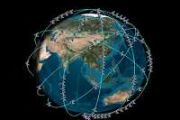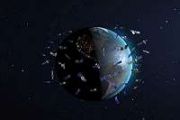
Copernical Team
Census of cosmic neighbors reveals new insights with help from citizen scientists
 Using various telescopes, scientists, including volunteer citizen scientists worldwide, have mapped over 3,500 cosmic entities within 65 light-years of the Sun through the Backyard Worlds: Planet 9 project.
A recent study published in The Astrophysical Journal details these findings, highlighting that stars outnumber brown dwarfs by four to one in this sector, yet low-mass objects prevail
Using various telescopes, scientists, including volunteer citizen scientists worldwide, have mapped over 3,500 cosmic entities within 65 light-years of the Sun through the Backyard Worlds: Planet 9 project.
A recent study published in The Astrophysical Journal details these findings, highlighting that stars outnumber brown dwarfs by four to one in this sector, yet low-mass objects prevail Φsat-2 gets two new AI apps

Φsat-2, ESA’s groundbreaking cubesat scheduled for launch in June, will now include two new AI-driven apps destined to demonstrate a crucial role in future environmental monitoring from space. The apps, which focus on marine pollution and wildfires, were the winning entries in ESA’s OrbitalAI Challenge.
SpaceX launches Falcon 9, carrying 23 Starlink satellites from Florida
 SpaceX launched its Falcon 9 rocket, carrying 23 Starlink satellites into low-Earth orbit early Wednesday evening, under clear, sunny skies in Florida.
"Merlin engine ignition and liftoff of Falcon 9!" SpaceX wrote in a post on X.
"Five, four, three, two, one, zero, mission liftoff," as video of the launch shows the 230-foot rocket lifting off at 5:26 p.m. EDT from Launch Complex
SpaceX launched its Falcon 9 rocket, carrying 23 Starlink satellites into low-Earth orbit early Wednesday evening, under clear, sunny skies in Florida.
"Merlin engine ignition and liftoff of Falcon 9!" SpaceX wrote in a post on X.
"Five, four, three, two, one, zero, mission liftoff," as video of the launch shows the 230-foot rocket lifting off at 5:26 p.m. EDT from Launch Complex Astronauts to patch up NASA's NICER telescope

NASA is planning to repair NICER (Neutron star Interior Composition Explorer), an X-ray telescope on the International Space Station, during a spacewalk later this year. It will be the fourth science observatory in orbit serviced by astronauts.
China gears up for Shenzhou XVIII manned space mission
 The China Manned Space Agency has announced that the Shenzhou XVIII mission is poised for launch in the upcoming days, aiming to deliver three astronauts to the Tiangong space station.
On Wednesday, the Shenzhou XVIII crew spacecraft, along with its Long March 2F rocket, was transferred to the service tower at the Jiuquan Satellite Launch Center located in the Gobi Desert of northwestern C
The China Manned Space Agency has announced that the Shenzhou XVIII mission is poised for launch in the upcoming days, aiming to deliver three astronauts to the Tiangong space station.
On Wednesday, the Shenzhou XVIII crew spacecraft, along with its Long March 2F rocket, was transferred to the service tower at the Jiuquan Satellite Launch Center located in the Gobi Desert of northwestern C How to Tell Space Rocks from Space Junk
 Upcoming surveys will find dozens of near-Earth objects each night, but some of those objects will be space junk rather than asteroids. How will we tell the difference?
b>Masquerading as Asteroids br> /b>
When humankind sent its first rocket toward the Moon 65 years ago, it marked the beginning of a long era of lunar exploration. Now, the cast-off rocket parts from decades of lunar missi
Upcoming surveys will find dozens of near-Earth objects each night, but some of those objects will be space junk rather than asteroids. How will we tell the difference?
b>Masquerading as Asteroids br> /b>
When humankind sent its first rocket toward the Moon 65 years ago, it marked the beginning of a long era of lunar exploration. Now, the cast-off rocket parts from decades of lunar missi GDFAU joins NASA for university nanosatellite project
 Florida Atlantic University's College of Engineering and Computer Science has been chosen as one of eight U.S. university teams to collaborate with NASA and the U.S. military. This partnership aims to boost innovation and expertise in the small satellite sector through the 2024 Mission Concept Program.
The program, a part of NASA's CubeSat Launch Initiative (CSLI), involves cooperation wit
Florida Atlantic University's College of Engineering and Computer Science has been chosen as one of eight U.S. university teams to collaborate with NASA and the U.S. military. This partnership aims to boost innovation and expertise in the small satellite sector through the 2024 Mission Concept Program.
The program, a part of NASA's CubeSat Launch Initiative (CSLI), involves cooperation wit China launches space collaboration forum with Latin America and the Caribbean
 Next week, Wuhan, Hubei province, will be the site of the first-ever China-Latin America and the Caribbean Space Cooperation Forum, as announced by the China National Space Administration (CNSA).
This inaugural two-day event, a collaborative effort among the CNSA, the Foreign Ministry, and the government of Hubei province, is scheduled to begin on April 24, which is celebrated as China's S
Next week, Wuhan, Hubei province, will be the site of the first-ever China-Latin America and the Caribbean Space Cooperation Forum, as announced by the China National Space Administration (CNSA).
This inaugural two-day event, a collaborative effort among the CNSA, the Foreign Ministry, and the government of Hubei province, is scheduled to begin on April 24, which is celebrated as China's S ICEYE secures substantial growth investment to bolster its SAR satellite fleet
 ICEYE, a leader in synthetic aperture radar (SAR) technology for Earth Observation, has successfully closed an oversubscribed $93M funding round aimed at expanding its SAR satellite operations. This recent financial boost will support the enhancement of the largest SAR satellite constellation globally and the development of new data and subscription services. This round is a continuation of the
ICEYE, a leader in synthetic aperture radar (SAR) technology for Earth Observation, has successfully closed an oversubscribed $93M funding round aimed at expanding its SAR satellite operations. This recent financial boost will support the enhancement of the largest SAR satellite constellation globally and the development of new data and subscription services. This round is a continuation of the Why Figuring Out How Potassium Is Destroyed in Stars Is Important to Understanding the Universe
 If you want to know where elements come from, look to the stars. Almost every element heavier than helium is formed through nuclear reactions in stars. But which stellar processes are responsible for these elements? Can we find patterns in how much of each element we observe in different astrophysical environments, like stars, galaxies or globular clusters?
Recently, our team of NC State r
If you want to know where elements come from, look to the stars. Almost every element heavier than helium is formed through nuclear reactions in stars. But which stellar processes are responsible for these elements? Can we find patterns in how much of each element we observe in different astrophysical environments, like stars, galaxies or globular clusters?
Recently, our team of NC State r 







